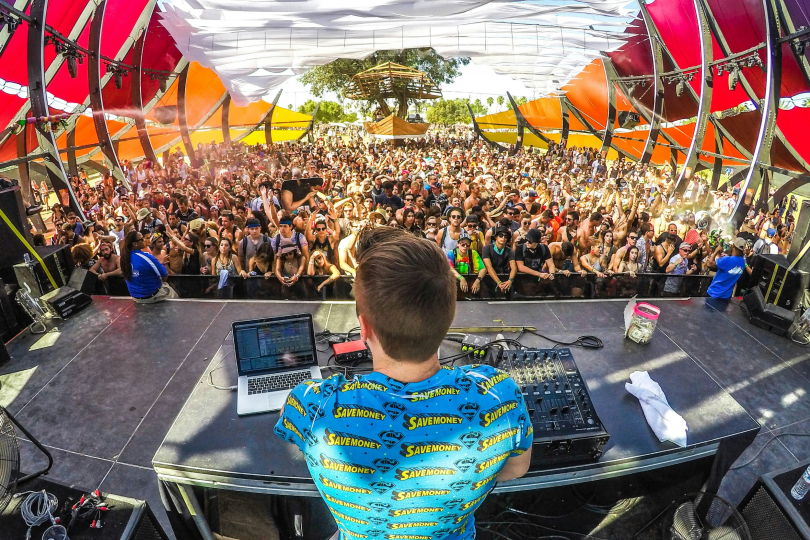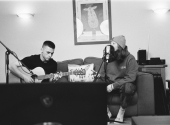
Music is Not Rocket Science #7: Banned BPM
One of my students and I recently discussed tempo perception in a bass lesson. I was showing him a simple math trick involving multiples of tempo, when you play with the BPM, which could be 22, 44, 88 or 176, for example. So you actually have different forms of the same pulse and can perceive rhythmic subdivisions better this way. It's a great exercise for a deeper perception of the quality of your synchronization with a given BPM. You will relax and play more accurately and with more confidence. But what about the BPM and tempo of the songs? We've already covered this topic in a previous episode, but today we'll look at it from a different angle. Let's start with the bizarre new tempo law that has come into effect in Chechnya.
Sometime in early April of this year, Chechnya banned playing or performing in public any music outside of 80-116 BPM. This is a bizarre regulation that had the (obviously political) objective of excluding countless songs and genres of music from the Western world (meaning mostly Europe and the US). Chechnya is in fact part of Russia, has a conservative Islamic social structure controlled by the dictatorial Kadyrov family and lies in the North Caucasus region between the Caspian and Black Seas.
It's probably just a "clever" way of ensuring that the Lezginka (Chechen national dance, which is insanely fast but whose tempo counts in halftime so it fits within the officially set BPM limit) is legal while excluding foreign music such as house, techno and, of course, pop. Daft Punk's mega-popular dance hits are usually in the 120-127 BPM range, so this would "not fit the Chechen mentality", according to the republic's leader Ramzan Kadyrov. This BPM censorship is also intended to prevent the infiltration of other nations' musical cultures.
Let's take a closer look at the evolution of tempo in music. By what is it determined? Cheerful equals fast? And who invented the metronome and when?
Guesstimate close to your heart – historical tempo markings
In classical music, it is a common practice to designate the tempo of a piece with one or more Italian (very often highly poetic) terms such as andante (walking pace), maestoso (majestically) or allegro con brio (lively). This practice developed in the 17th and 18th centuries, during the Baroque and Classical periods. In early music, in the Renaissance period, performers understood most music to flow at a tempo defined by the tactus (roughly the speed of the human heartbeat, gently orchestrated by the up and down motion of the hand).
Another example of tempo notation in earlier times was the mensural notation – a musical notation system used for polyphonic European vocal music from the late 13th century to the early 17th century. The term "mensural" refers to the ability of this system to describe precisely measured rhythmic durations in numerical ratios of note values.
In the Baroque period, in addition to the Italian poetic tempo markings mentioned above, compositions added the name of the dance (for example, allemande or sarabande), the latter of which is also a designation of both tempo and meter (i.e., the number of durations to be counted and danced). Each musician was expected to know how to interpret these markings based on custom and experience. In some cases, however, these markings were simply omitted. For example, the first movement of Bach's Brandenburg Concerto No. 3 has no tempo or meter designation.
Despite the growing number of explicit tempo markings, classical musicians still follow conventions and have their own interpretations of particular types of pieces and dances. Thus a minuet will have a rather more deliberate tempo, slower than a Viennese waltz, a perpetual mobile will have a rather brisk rhythm, and so on. Different kinds of music imply tempi, and so Ludwig van Beethoven wrote "in tempo d'un menuetto" for the first movement of his piano sonata, Op. 54, although that movement is not technically a minuet (and a piano sonata is not generally a dance piece).
Metronome – good servant but a bad master?
If you've been through music school or are a senior, you'll be familiar with the classic analogue metronome with its typical pendulum mechanism where you shift a weight to regulate the number of oscillations. Several people have laid claim to the invention of the metronome at different times in history, but in 1815, German inventor Johann Maelzel was the first to patent a mechanical, wind-up metronome for determining the exact tempo for musicians under the exhaustive title "Instrument/machine for the improvement of all musical performance, called the metronome."
From this point on, musical tempo was almost always measured in beats per minute (BPM). Metronomes often display both BPM numbers and traditional tempo markings in Italian, but these have a fairly wide range of interpretations. Take, for example, the tempo of a vivace, which is usually somewhere between 156 and 176 BPM, but which also communicates to the musician that he or she should play it "lively". This tempo poetics has fallen away with the advent of digital technology, where BPM serves as a perfectly accurate mathematical designation for a DAW project. Depending on the tempo of a given song, you then line everything up on a so-called grid (a rhythmic subdivision grid) to layer musical tracks at will.
Way too perfect a coordination
Even though, thanks to today's recording technologies and the increasingly powerful role of various AI helpers, you can create any composition using only your laptop (often you don't even need an instrument, a microphone for singing or even a MIDI keyboard), the decision on the tempo of a song is one of the crucial factors. Often, simply comparing all the tracks exactly to the grid (so to speak, they are perfectly in sync) doesn't work either, because especially with percussion instruments, it creates a sterile-sounding recording that lacks "groove", a rhythm that catches you and, most importantly, gets you moving.
Unless it's a specific genre of EDM, having a perfect mathematical tempo usually doesn't work. Our perception of music requires a certain level of imperfection, of human input into the process, otherwise, we have a hard time connecting emotionally with the song. I'm sure in time AI will find a way to mimic even this specific "human factor" and it will be almost impossible to tell what was created by a machine and what was created by a human.
However, if you work on a deeper sense of tempo and rhythm in your practice, you will gain tremendous confidence in playing your beloved instrument (or singing). Clap, stomp, dance, pogo, express rhythm and tempo with all your limbs, and vocalize, perhaps in konnakol. You will be in complete harmony with the music – and especially with its "forbidden" tempo.
If you have found an error or typo in the article, please let us know by e-mail info@insounder.org.





